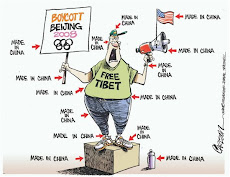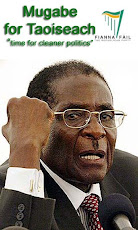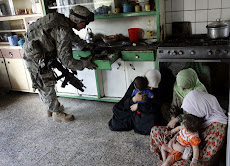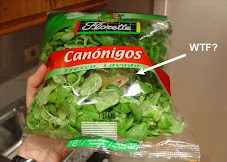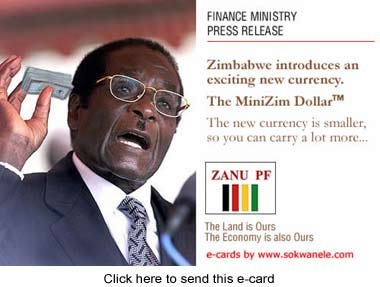 April 3rd. (Financial Times)
April 3rd. (Financial Times) - Slum-dwellers in Dar es Salaam pay the equivalent of £4 ($8, €5) for 1,000 litres of water, bought over time and by the canister. In the same Tanzanian city, wealthier households connected to the municipal supply receive that amount for just 17p. In the UK, the same volume of tap water costs 81p and in the US it is as low as 34p. Figures from other countries confirm the evidence: it is generally the poorest who pay most for what is one of the most essential of all natural resources. Water is in short supply for a large proportion of the world’s people: about 1bn lack access to clean water and 2.6bn have no sanitation. An estimated 5,000 children die every day from water-related disease, according to WaterAid, the London-based charity. If the number of people lacking safe drinking water were halved, at a cost of about $10bn, the world would benefit by $38bn in annual economic growth, according to the United Nations Development Programme. Disputes over water rights can, the UNDP argues, lead to conflicts – such as in Darfur. Yet, as each shower of rain serves to remind, water is just about the most renewable natural resource. The problem is its distribution – not only the climatological patterns that leave some places parched while others flood but also the way societies manage their water resources.
The question is how to put a fair price on water. In some of the same countries where poor people lack access to clean water, others waste the resource because their supply is subsidised by the government or is otherwise priced so low that they have no incentive to save it. This is hardly a problem confined to the developing world. Farmers in Spain are estimated to pay a price for water that is only about 2 per cent of its real cost. Rice and wheat farmers in California’s central valley use one-fifth of the state’s water but the low prices they pay represent a yearly subsidy estimated at $416m for 2006. “Water is absolutely not fairly priced or realistically priced. Therefore people are using water as if it is a resource that will be free of charge forever. That is the reason we are running out of water,” says Peter Brabeck-Letmathe (pictured below), chief executive of Nestlé, the foods group. He warns of an impending crisis in which business will struggle to find the water they need and will be forced to pay much higher prices for it, if more is not done to conserve the resource and distribute it more rationally.

The only answer, argues Mr Brabeck-Letmathe, is to bring market forces to bear. Water must be fairly and realistically priced, in order to ensure it is not wasted. “That is how to move forward,” he says. His company is involved in the issue as part of efforts to present itself as a good citizen in the face of a 30-year-long boycott of its products by consumers who disapprove of Nestlé’s record of promoting powdered baby milk in the developing world. Mixing the infant formula with contaminated water led to numerous deaths that could have been avoided if mothers breast-fed instead, activists allege. The company says it now complies with an international code on marketing such products. One of the most damaging effects of the failure to price water fairly is the global trade in “virtual water” – that is, water used in the production of food or manufactured goods. Some countries that are poor in water nevertheless send it abroad in the form of agricultural and industrial exports.
Australia exports more “virtual water” than any other country, through shipments of wheat and other crops. Its farmers have suffered a seven-year drought, only now showing signs of easing. As a result, they are the most efficient agricultural users of water in the world. Experts wonder, however, whether it makes sense for such an arid country to engage so much in growing irrigation-intensive crops for export. The trade in “virtual water” goes largely unnoticed by consumers of the processed goods. But the price of many goods sold around the world shows that the water that went into their production was very cheap. A pair of jeans that sells for a few pounds uses up to 11,000 litres of water, according to Waterwise, a UK not-for-profit organisation. A hamburger that sells for less than a dollar requires more than 2,400 litres of water to produce. Agricultural users of water are often heavily subsidised, whether directly or indirectly, making the water for farmers “vastly underpriced”, says Andrew Hudson, leader of the water governance programme at the UNDP. This is contributing to serious problems: the UN organisation estimates that in parts of India, ground-water tables are falling by more than a metre a year, jeopardising future agricultural production.
Other businesses may also have their water supply subsidised or may be granted extraction rights that give them cheap or even free access to water sources. The UNDP concludes: “When it comes to water management, the world has been indulging in an activity analogous to a reckless and unsustainable credit-financed spending spree. Countries have been using far more water than they have, as defined by the rate of replenishment.” This recklessness is storing up problems for the future, when the world’s population is forecast to rise to 9bn by 2050 from nearly 6.7bn today. How can water be fairly priced? Many non-governmental organisations want water to be recognised as a basic human right and are suspicious of schemes that raise the price of water. Henry Northover, head of policy at WaterAid, adds that in some developing countries, poor governance structures hamper attempts to price water: “The success of using pricing as a form of regulating supply is a function of the robustness of institutions and effectiveness of policy regimes.” Mr Hudson believes that water can be better priced if certain conditions are met first: “You need to have mechanisms that provide for the basic human need of 20 litres of water a day [for drinking, cooking and washing]. For that, governments need to apply subsidies in an appropriate fashion and build local access to water.”
Most governments regulate the price of water but, because of the “perverse subsidies”, that often does not result in sensible water pricing. So Mr Brabeck-Letmathe has an alternative idea: water trading. He compares the concept to carbon trading, which has put a price on emitting carbon dioxide in Europe. Under a so-called cap-and-trade mechanism, a limit is imposed on how much carbon companies can emit and allows them to trade their quotas with one another. A similar system with water would mean that businesses and farmers would be granted the right to use a certain amount of water. If they want to use more than their quota, they must buy the rights from other companies or farmers in the trading system. This idea is not new, he says – desert dwellers in Oman have been trading with each other the right to water supplies for thousands of years. More recently, in Nestlé’s native Switzerland, a system has come to exist in some areas where farmers each have a right to take a certain amount from irrigation channels and, depending on the crops they grow, might decide to take less water in return for payment from a neighbour who wants to take more. Fred Krupp, president of Environmental Defense Fund, a US charity, is an enthusiastic supporter of the idea. He told a meeting at Davos in January: “Appropriately designed and applied, a market-based tool such as cap-and-trade can be just as much a solution to our water crisis as it is for global warming.”
 But Jamie Skinner, principal researcher at the International Institute for Environment and Development, says there are legal and political obstacles to water trading. He points to Spain, where farmers do not own the water and therefore could not trade it without disentangling water rights from land rights, which is tricky. He adds that for water trading to work, “some degree of privatisation of the resource is needed, which has proved politically difficult or distasteful in many contexts”. Mr Krupp acknowledges that there would be legal and governance problems and vested interests to be overcome – particularly the farming lobby, as agriculture receives the best treatment almost all over the world when it comes to water rights and pays less for its water than any other industry. He says: “There is no question that we have much to do to ensure that water trading occurs in a way that is cost-effective and prevents undue windfalls. We also need to ensure that water transfers don’t hurt rural communities, low-income populations or the environment. An effective system of cap-and-trade for water will require lots of metering and enforcement.” But he insists: “Those issues are very manageable and we and others are already working on them.”
But Jamie Skinner, principal researcher at the International Institute for Environment and Development, says there are legal and political obstacles to water trading. He points to Spain, where farmers do not own the water and therefore could not trade it without disentangling water rights from land rights, which is tricky. He adds that for water trading to work, “some degree of privatisation of the resource is needed, which has proved politically difficult or distasteful in many contexts”. Mr Krupp acknowledges that there would be legal and governance problems and vested interests to be overcome – particularly the farming lobby, as agriculture receives the best treatment almost all over the world when it comes to water rights and pays less for its water than any other industry. He says: “There is no question that we have much to do to ensure that water trading occurs in a way that is cost-effective and prevents undue windfalls. We also need to ensure that water transfers don’t hurt rural communities, low-income populations or the environment. An effective system of cap-and-trade for water will require lots of metering and enforcement.” But he insists: “Those issues are very manageable and we and others are already working on them.”
Other differences exist that would hamper imposing a cap-and-trade system on water as has been done with carbon. The trade in carbon is virtual: companies swap permits to emit the greenhouse gas rather than transferring actual tonnages of it. But water is heavy and difficult to transport across long distances. “It is not fungible, it is not deliverable,” says Edward Kerschner, chief investment strategist at Citi Global Wealth Management. The only world shipments of any significance are of bottled water, which is an expensive product often regarded as environmentally unsound. So any trade in water could take place only within small regions, such as areas that share a source. The examples of Switzerland and a few others show that local systems for water trading can be developed, provided the governance is there to ensure that the trading is conducted fairly and there is the political will to press ahead. Whether water trading catches on or not, Mr Brabeck-Letmathe believes one thing is certain: businesses should brace themselves for more expensive water, the use of which would also be more highly regulated. He says: “We will have to pay more for our water – and it is correct that we should.” Many businesses would prefer a system of water trading to having their charges arbitrarily raised by water companies or bureaucrats, he argues. As Mr Krupp concludes: “What relevance does all this have to the business community? A secure water future, including healthy river systems, contributes to a healthy business climate. Markets and conservation are the most cost-effective alternatives for getting to that secure water future.” For the poor who pay disproportionately high amounts for their water, fairer pricing could not come soon enough.
By Fiona Harvey, Environment Correspondent
+++++++++++++++++++++++++++++++++++++++++++++++++++
Disclaimer
No responsibility or liability shall attach itself to either myself or to the blogspot ‘Mozlink’ for any or all of the articles/images placed here. The placing of an article does not necessarily imply that I agree or accept the contents of the article as being necessarily factual in theology, dogma or otherwise.
Mozlink
 A woman and child fled Tuesday amid riots in Kibera, a slum in Nairobi. Witnesses said young men lighted fires, clashed with the police and tore up rail tracks. (Karel Prinsloo)
A woman and child fled Tuesday amid riots in Kibera, a slum in Nairobi. Witnesses said young men lighted fires, clashed with the police and tore up rail tracks. (Karel Prinsloo)












